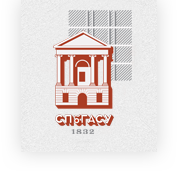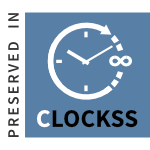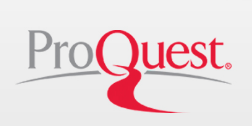The Impact of Pamela’s Fitness Content on Xiaohongshu on Women’s Body Anxiety: An Analysis of Visual Narrative and Emotion Mobilization
DOI:
https://doi.org/10.63313/LLCS.2006Keywords:
Xiaohongshu (RED), Fitness influencers, Body anxiety, Visual narrative, Emotion mobilizationAbstract
This study examines how Pamela Reif’s fitness content on Xiaohongshu (RED) influences women’s body anxiety through visual narratives and emotion mobilization. Drawing on Sara Ahmed’s theory of the cultural politics of emotion, the paper employs qualitative content analysis of highly engaged image–text posts tagged with “Pamela” to explore how shame, pain, excitement, and ambivalent love/hate circulate within online fitness discourse. Findings reveal that before–and–after photos, quantified weight changes, and body focalization construct an idealized “controllable body,” reinforcing the cultural logic of “science + self-discipline = the ideal body.” While such content promotes participation in fitness and fosters community engagement, it also intensifies upward social comparison, self-objectification, and collective shame culture, exacerbating women’s body dissatisfaction and psychological distress. The study highlights both the empowering and harmful dynamics of social media fitness cultures, emphasizing the need for platforms, influencers, and policymakers to promote diverse body representations and media literacy initiatives.
References
[1] Ahmed, S. (2004). The cultural politics of emotion. Edinburgh University Press.
[2] Alleva, J. M., Tylka, T. L., Martijn, C., Waldén, M. I., Webb, J. B., & Piran, N. (2023). “I’ll never sacrifice my well-being again:” The journey from negative to positive body image among women who perceive their body to deviate from societal norms. Body Image, 45, 153–171. https://doi.org/10.1016/j.bodyim.2023.03.001
[3] Choukas-Bradley, S., Nesi, J., Widman, L., & Galla, B. M. (2020). The Appearance-Related So-cial Media Consciousness Scale: Development and validation with adolescents. Body Image, 33, 164–174. https://doi.org/10.1016/j.bodyim.2020.02.017
[4] Czepczor-Bernat, K. (2022). The role of body shame and age on appearance-based exercise and positive body image in women from Poland: Preliminary results of a cluster analysis. International Journal of Environmental Research and Public Health, 19(23). https://doi.org/10.3390/ijerph192315741
[5] Çınaroğlu, M., & Yılmazer, E. (2025). Problematic social media use, self-objectification, and body image disturbance: The moderating roles of physical activity and diet intensity. Psy-chology Research and Behavior Management, 18, 931–952. https://doi.org/10.2147/PRBM.S517193
[6] Dane, A., & Bhatia, K. (2023). The social media diet: A scoping review to investigate the as-sociation between social media, body image and eating disorders amongst young people. PLOS Global Public Health, 3(3), e0001091. https://doi.org/10.1371/journal.pgph.0001091
[7] Fardouly, J., & Vartanian, L. R. (2016). Social media and body image concerns: Current re-search and future directions. Current Opinion in Psychology, 9, 1–5. https://doi.org/10.1016/j.copsyc.2015.09.005
[8] Foster, A., & Ellis, N. (2024). TikTok-inspired self-diagnosis and its implications for educa-tional psychology practice. Educational Psychology in Practice, 40(4), 491–508. https://doi.org/10.1080/02667363.2024.2409451
[9] Glaser, H. C., Jansma, S. R., & Scholten, H. (2024). A diary study investigating the differential impacts of Instagram content on youths’ body image. Humanities & Social Sciences Com-munications, 11(458). https://doi.org/10.1057/s41599-024-02960-3
[10] Hsieh, H.-F., & Shannon, S. E. (2005). Three approaches to qualitative content analysis. Qualitative Health Research, 15(9), 1277–1288. https://doi.org/10.1177/1049732305276687
[11] Li, W., Ding, H., Xu, G., & Yang, J. (2023). The impact of fitness influencers on a social media platform on exercise intention during the COVID-19 pandemic: The role of parasocial rela-tionships. International Journal of Environmental Research and Public Health, 20(2), 1113. https://doi.org/10.3390/ijerph20021113
[12] Lewallen, J., & Behm-Morawitz, E. (2016). Pinterest or thinterest?: Social comparison and body image on social media. Social Media + Society, 2(1). https://doi.org/10.1177/2056305116640559
[13] Rodgers, R. F., & Melioli, T. (2016). The relationship between body image concerns, eating disorders and Internet use, Part I: A review of empirical support. Adolescent Research Re-view, 1(2), 95–119. https://doi.org/10.1007/s40894-015-0016-6
[14] Sarda, E., El-Jor, C., Shankland, R., Hallez, Q., Patiram, D., Nguyen, C., Duflos, N., Durand, Y., Del Pozo, G., Ezan, P., Dechelotte, P., Rodgers, R., & Flaudias, V. (2025). Social media use and roles of self-objectification, self-compassion and body image concerns: A systematic review. Journal of Eating Disorders, 13(192). https://doi.org/10.1186/s40337-025-01353-4
[15] Smith, S. S., Ten Hoor, G. A., Lakhote, N., & Massar, K. (2024). Emotion in motion: Weight bias internalization, exercise avoidance, and fitness-related self-conscious emotions. Healthcare, 12(10), 955. https://doi.org/10.3390/healthcare12100955
[16] Timár, E. (2019). The body of shame in affect theory and deconstruction. Parallax, 25(2), 197–211. https://doi.org/10.1080/13534645.2019.1607230
[17] Wang, L., Li, X., Wang, D., & Zhu, J. (2024). Influence of social media fitness influencers’ credibility on users’ physical activity intentions. Digital Health, 10, 1–15. https://doi.org/10.1177/20552076241302016
[18] Yan, X., Yan, J., Tan, C., Fu, Y., & Wang, S. (2025). Your fitness-sharing is a reminder for my poor body: How fitness posts exposure on social media harms female body esteem. Fron-tiers in Psychology, 16, 1515575. https://doi.org/10.3389/fpsyg.2025.1515575
[19] Zhang, X., Zhu, W., Sun, S., & Chen, J. (2021). Does influencer popularity actually matter? An experimental investigation of the effect of influencers on body satisfaction and mood among young Chinese females: The case of RED (Xiaohongshu). Frontiers in Psychology, 12, 756010. https://doi.org/10.3389/fpsyg.2021.756010
Downloads
Published
Issue
Section
License
Copyright (c) 2025 by author(s) and Erytis Publishing Limited.

This work is licensed under a Creative Commons Attribution-ShareAlike 4.0 International License.















